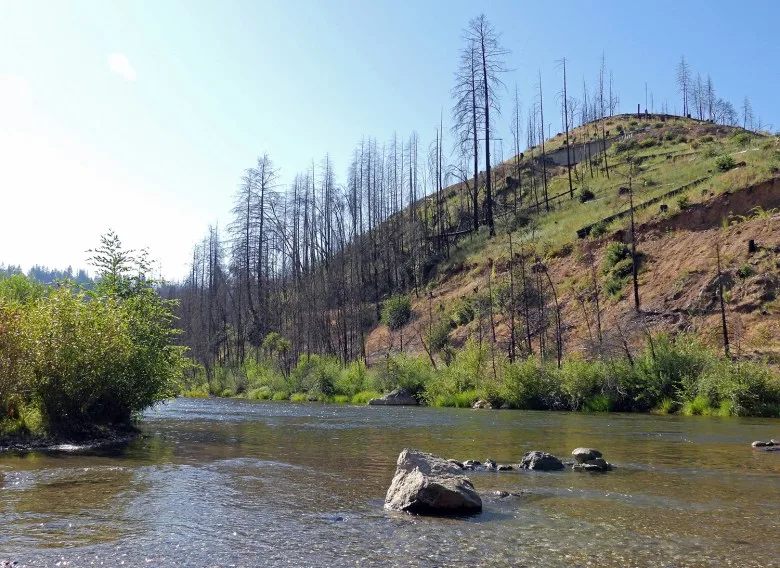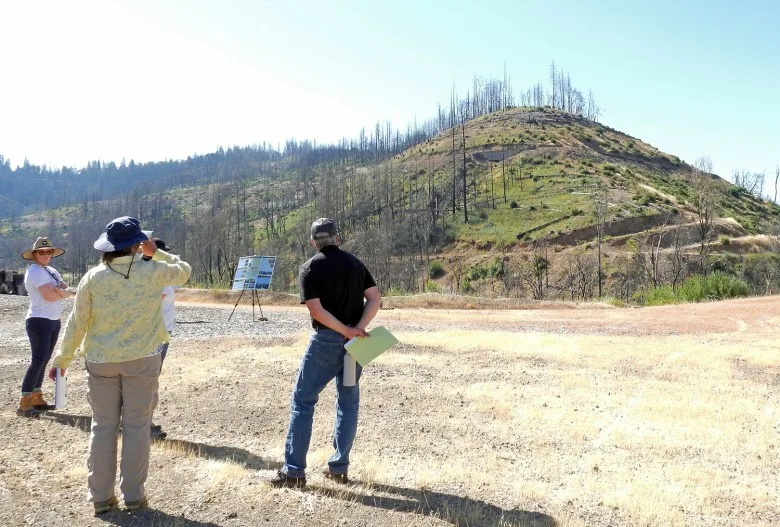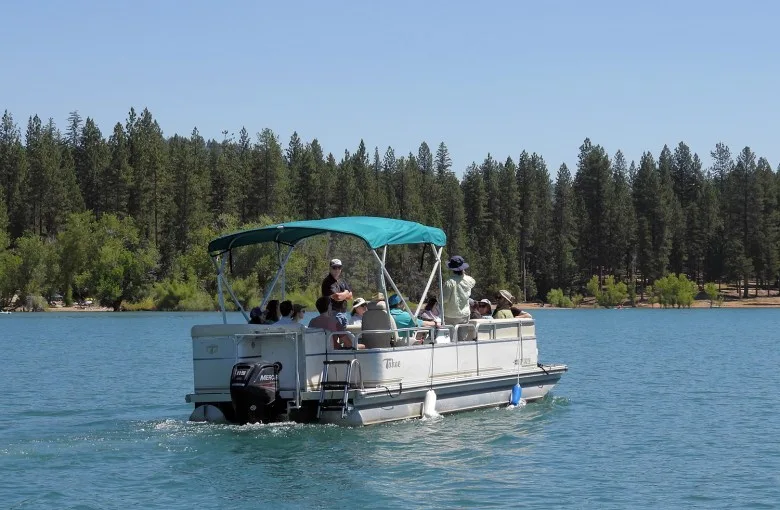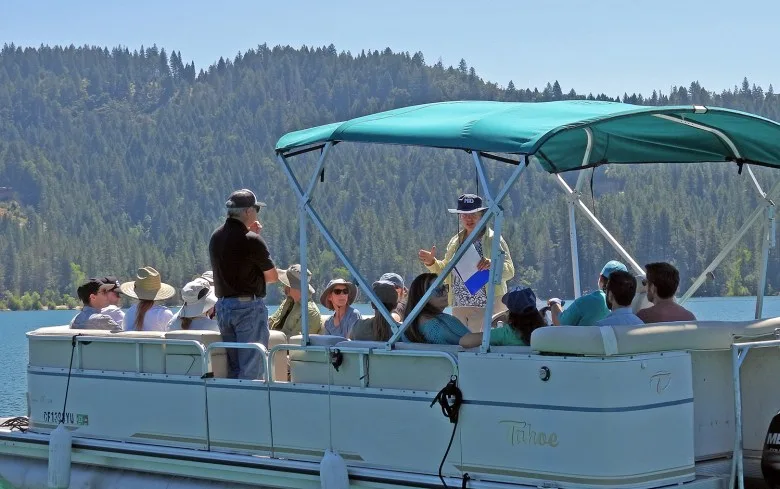Grass Valley, July 25, 2023 – It’s a stark contrast between bringing back a forest devastated by a wildfire and taking action to establish a healthy watershed before disaster strikes.

Prime examples are a comparison between Nevada Irrigation District’s (NID) work to remediate the destruction caused by the River Fire in 2021 on the Bear River and projects to thin trees and reduce ground fuels around Scotts Flat Reservoir.
NID hosted members of the Sierra Nevada Conservancy (SNC) and California Legislative aides for a tour on Thursday, July 20. The takeaway was that proactive measures are considerably cheaper and greatly benefit forests and watershed health, and the result supports healthy and vibrant forest ecosystems.
The River Fire began at the Bear River Campground in Placer County on Aug. 4, 2021 and scorched 2,619 acres before being fully contained on Aug. 13. Under a hot sun, tour participants looked out over miles of scorched terrain with blackened tree trunks and branches as far as they could see.
“There is an emotional, visceral feeling when you stand in a burn scar,” said NID Environmental Resources Administrator Neysa King. “Here was a beautiful, viable forest including oaks, pines and bay trees. It was alive through thousands of years of history.”
Many have described the scene as “destroyed,” yet there are signs of recovery. NID’s work has focused on restoring 150 acres of district-owned lands in the Bear River canyon, between Chicago Park and Lake of the Pines. Nearly half of the required work was done on steep slopes by hand crews.

King pointed out that the burn scar is beginning to rebound with green underbrush and small oak trees: “This area will naturally recover, and fire is an important part of these ecosystems; but it will take time. Our project is being done to hasten that recovery,” King said.
The cost of the NID’s River Fire remediation will be $4,700 an acre for the hand-crew work through reforestation.
By contrast, the tour continued to Scotts Flat Lake where NID has completed over 500 acres of forest treatment to create a “shaded fuel break” and to reduce dense forest area by thinning excess trees and reducing ground fuels. The water is blue, and the trees are green. It’s an example of building a healthy watershed.
The cost of this work was $2,250 an acre.

Being proactive pays off, King stressed: “Water comes from watersheds, so it is imperative that we keep pushing forward to keep our watersheds healthy. Work in the black costs twice as much as working in the green.”
There is an urgency to complete forest health and watershed projects, especially in the headwaters of the Sierra Nevada, which is NID’s water source. In Nevada County, 80 percent of the wildfires are people-related. Compounding that, recreation in the mountains has increased. A changing climate will continue to stress the forests communities, and forest management projects will help to reduce this impact.
“Where the people are, fires start,” King said. “It is vital that we do the work to strengthen our watersheds now.”
The purpose of the tour was to give state leaders the opportunity to view two successful, albeit quite different, projects. The point was to drive home the need for committed funding.

“We know what to do; the science is there. We – water districts, the state, local communities, federal government and others – all need to work together collectively. The key is securing committed funding to make this happen soon,” King said.
Toward NID’s projects, the SNC, a state agency, awarded $570,000 in grant funding for the Bear River Wildfire Recovery Project in 2022. The agency also funded $981,000 toward the Scotts Flat Reservoir Forest Health and Wildfire Risk Reduction Project in 2018.
Read more about the Scotts Flat Reservoir Forest Health and Wildfire Risk Reduction Project, click here.
Read more about the River Fire Remediation and Bear River Wildfire Recovery Project, click here.


